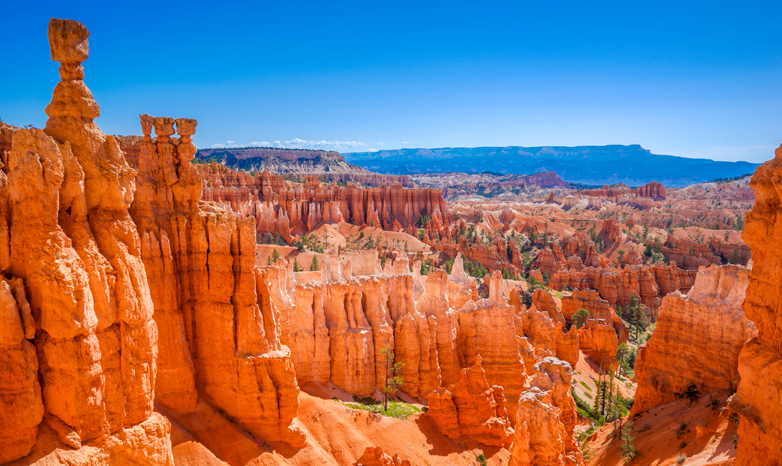SRU geo-science students head Southwest

Bryce Canyon National Park is one of seven stops for a group of 18 Slippery Rock University students enrolled in the May 29-June 12 "Field Investigation in the Geosciences” class.
May 11, 2016
SLIPPERY ROCK, Pa. - The rocks and landscapes of the American southwest, including natural wonders such as the Grand Canyon and Bryce Canyon National Park, tell the tale of millions of years of earth history.
The region is considered a geologist's dream. A dream 18 Slippery Rock University geo-science majors enrolled in an SRU summer class will pursue 2,000 miles from home, in the deserts and red rocks of Utah.
Students enrolled in the May 29-June 12 "Field Investigation in the Geosciences," class will visit and conduct research at several national parks, including Grand Canyon, Bryce, Fish Lake National Forest and the manmade Hoover Dam site.
Langdon Smith, Jr. and Tamra Schiappa, SRU professor and associate professor of geography, geology and the environment, will teach the three-credit course.
Aside from studying natural features, students will research the social aspects of land ownership, such as how the formation of federal parks impacted Native Americans and water shortages in the arid region.
"I am thinking about going into the natural resource management/conservation field, so my topic on this trip will be studying droughts in the Southwest and peoples' reliance on the Colorado River," said Ericka Seiler, a environmental science major from Bryn Mawr.
The fieldtrip comes during a time of heightened appreciation for the National Park Service, which is celebrating its 100th anniversary this year. Twenty-seven SRU parks and resource management students left May 10 for a 10-stop tour of national parks in Arizona, Utah and Colorado.
Seiler said the class would give her the last three upper division credits she needs to graduate, although SRU let her participate in the May 7 commencement.
Seiler said she visited Bryce and the Grand Canyon at 12 but did not appreciate the sights from perspective of an earth scientist.
"It's easy to talk about geologic folds in rock structures and how erosion wears away at formations, but it's an entirely different thing to see it up close and personal," she said. "I'm thrilled to go back now that I have a better understanding of what I'll be seeing.
I like looking at systems holistically, being able to feel the heat and wind and being able to see and touch the landscape really helps put you into a mindset to better understand the world around you."
The group will camp and take day trips to different sites for study and reflection.
"We are expected to jot notes into our field books then study them for our quizzes," she said.
She said Schiappa and Smith offer a broad range of expertise from which to learn.
"The benefits of having a geologist/paleontologist and conservationist who knows the social impacts is that we - the students - get to look at both the physical science and social science of this trip," Seiler said.
In anticipation of the trip, Seiler's has invested in a sturdy pair of hiking boots, a lightweight tent and good rain jacket. "It's the desert but who knows what will happen," she said.
MEDIA CONTACT: Gordon Ovenshine | 724.738.4854 | gordon.ovenshine@sru.edu

